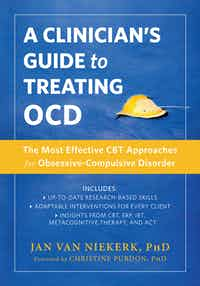By Sand Chang, PhD, co-author of A Clinician's Guide to Gender-Affirming Care
I work in the interdisciplinary field of transgender health. I’m also a nonbinary person and go by they/them/their pronouns. When I first started working with other trans people over fifteen years ago, this work was only on the fringes of cultural awareness for most mental health professionals, a niche or specialty that did not concern most.
Times have changed. Transgender visibility in the media, politics, and everyday conversation has increased significantly in the past five years. Take, for instance, Laverne Cox and Caitlin Jenner becoming household names. I’ve noticed many of my colleagues showing more interest and seeking training on providing affirming care to trans and nonbinary people. Still, working with trans people isn’t considered something all providers should be concerned about. I’m here to debunk this myth. It is no longer okay for providers to avoid the ethical duty to educate themselves about working with people across diverse backgrounds. Let me tell you why I’m concerned and why you should be too.
First, what does “trans” mean?
Trans is a term used to describe people whose gender identities and/or expressions do not fully line up with what is expected of the person based on the sex (male or female) that they were assigned at birth. There are a wide range of trans identities, and diverse expressions of gender have existed for centuries on every continent. In other words, trans is not a new phenomenon, and in many ways is limited in fully capturing human diversity with regards to what is classified as masculine or feminine.
Trans communities are under attack
At a systemic level, trans communities’ well-being is threatened by an administration that seeks to erase their very existence. Trans people face multiple forms of oppression, which is worsened when a trans person also has other marginalized identities (e.g., being both trans and a person of color). Violence, suicidality, and health problems such as HIV lead to negative health outcomes, including increased mortality risk. No matter what kind of service or care a trans person seeks, they are significantly more likely to experience discrimination, and these experiences are costing trans lives.
Providers become de-skilled when they encounter people different from them, meaning they forget how to treat trans people like people even when their reasons for seeking treatment have nothing to do with gender or medical transition. For instance, a trans client presenting with panic attacks should be able to go to any mental health provider who knows how to treat panic disorder. They shouldn’t have to find a specialist in transgender panic. Say you’re a cognitive behavioral therapist who employs exposure techniques to help reduce panic symptoms in your clientele. The tools you would need in order to treat a trans client are basic cultural competency.
Cultural competence for treating trans people
What does basic cultural competency in working with trans clients look like? There are many resources available (such as A Clinician’s Guide to Gender-Affirming Care), but here are a few suggestions to get you started:
-
Understand the difference between sexual orientation and gender identity.
-
Learn about basic respect and communication that centers on self-determination. This means using the name, pronouns, and other terms a trans client uses to describe themselves.
-
Familiarize yourself with gender dysphoria: how it is not the same as being transgender, and how it may overlap with depression, anxiety, or other mental health concerns.
-
Educate yourself so that whatever treatment approach you are using does not reinforce the gender binary or exclude trans people’s experiences.
-
Understand that there are an infinite number of ways to describe gender, sometimes in line with the familiar categories of man and woman yet very often not. For example, some people consider themselves to be nonbinary, gender fluid, or gender neutral.
-
Be humble. You may never understand another person’s full experience, but you can listen and follow their lead. This is especially crucial for cisgender allies (people who are not transgender but actively support transgender people’s lives).
Chances are, you have already worked with trans clients, or you will encounter them as clients in the future. Becoming versed in respecting and communicating with trans clients is the very least providers can do to avoid doing harm, and ideally, increase the well-being of trans people and communities. The responsibility to treat trans people cannot lie on the shoulders of providers who routinely work with trans clients. Trans/nonbinary clients need to feel safe and welcomed even when they are not seeking specialty care. It’s time for all clinicians to become accountable and create inclusive spaces so that trans clients and those who serve them can come out of the margins.
 Sand Chang, PhD, is a Chinese American, nonbinary psychologist and trainer. They are the clinical practice consultant for Kaiser Permanente Northern California Transgender Services. They also have a private practice in Oakland, CA, specializing in trauma/eye movement desensitization and reprocessing (EMDR), addictions, and eating disorders. Chang is coauthor of A Clinician’s Guide to Gender-Affirming Care.
Sand Chang, PhD, is a Chinese American, nonbinary psychologist and trainer. They are the clinical practice consultant for Kaiser Permanente Northern California Transgender Services. They also have a private practice in Oakland, CA, specializing in trauma/eye movement desensitization and reprocessing (EMDR), addictions, and eating disorders. Chang is coauthor of A Clinician’s Guide to Gender-Affirming Care.


 Part 2: What to Do When a Client Is Participating in Self-Judgment?
Part 2: What to Do When a Client Is Participating in Self-Judgment?